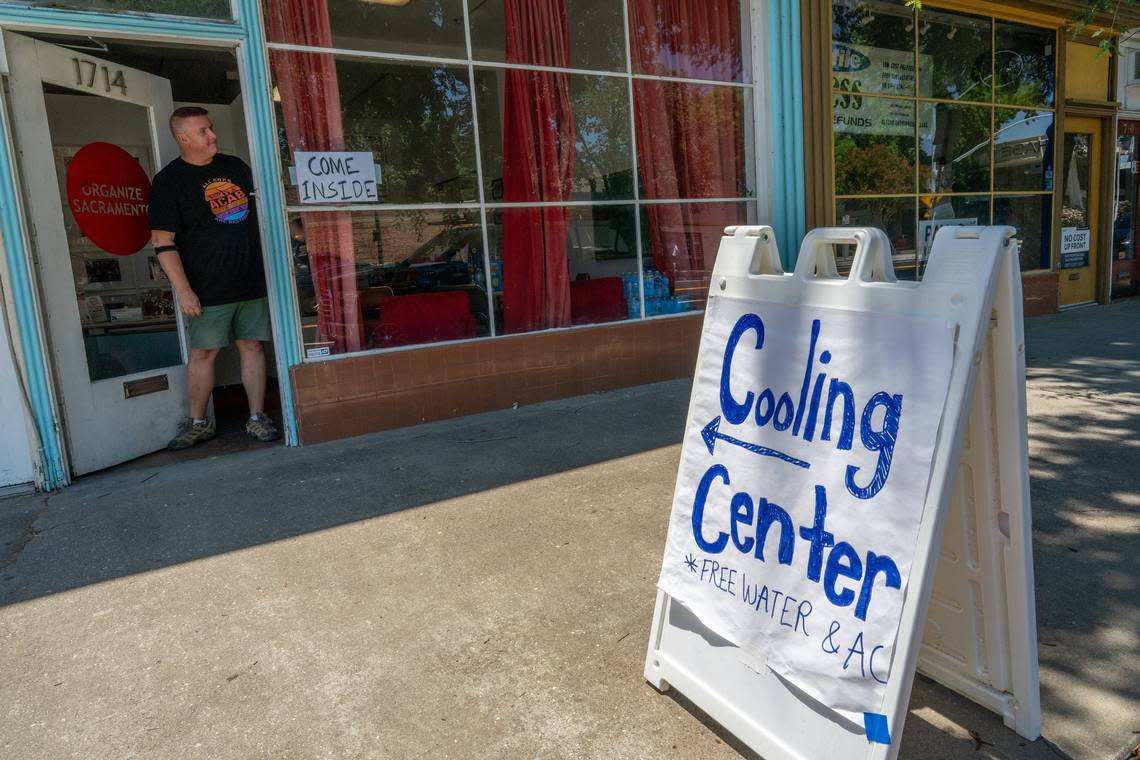Extreme heat cost California nearly $8 billion in the last decade, a new report finds

The human and economic toll of extreme heat in California is severe and growing, a report by the state Insurance Department found.
The analysis released late last month estimated that extreme heat cost the state $7.7 billion in the last decade, mostly in emergency health responses but also in productivity loss, industry disruptions and infrastructure damage.
The report estimated that nearly 460 deaths were caused by these heat events, a figure that surpasses Cal Fire’s recorded death toll of the state’s 20 deadliest fires at 312.
As California reels from a Fourth of July holiday heat wave and world record breaking temperatures, the Insurance Department’s report sought to equip state and local governments with data and policy recommendations to better address the problem.
“The challenges presented by extreme heat are no longer a distant concern,” said Insurance Commissioner Ricardo Lara in a statement releasing the report. “They are an escalating threat to our health, infrastructure, economy and overall well-being.”
The report defined extreme heat events events as periods of excessively high temperatures that lasted for at least seven days between 2013 and 2022. Researchers selected seven events that covered a diverse swath of the state’s geography and population.
Extreme heat events in California have become more frequent and prolonged in recent decades, the report found. Vulnerable populations such as the elderly and low-income communities face the highest risk of heat-related illness and mortality.
Estimated mortality rates from extreme heat were in some cases twice as high for Black, Native American and low-income white populations, according to the report.
But the economic losses are widespread, with significant impacts to the state’s agriculture, manufacturing and energy sector. Documented power outages alone led to an estimated $580 million in damages, the report found.
To arrive at these estimates, researchers assessed the economic impacts of extreme heat waves and mapped them against other peer-reviewed research measuring health and industrial heat impacts. They did not attempt to directly measure the costs.
A single extreme heat wave, according to the report, caused an estimated $2.2 billion in health costs, 2.132 hospitalizations and premature deaths for 200 people. The majority of those impacted are covered by Medicare.
Dr. David Terca, assistant chief of the emergency department at Kaiser Permanente in Sacramento, remembers a heat wave that swept California in 2021 vividly because of its visible impact in the emergency room.
“When it’s a prolonged heat wave and 100 plus degrees, we definitely see increases in the acutely ill, heat exhaustion and heat stroke patients,” he said. “There’s no question.”
Terca said he worries about Californians’ increased dependence on air conditioning, the gas-powered appliance that becomes a survival tool during extreme heat but only exacerbates human-caused climate change because of resulting carbon emissions.
Extreme heat is now just a regular part of California life, he lamented.
The state report was required by 2022 legislation that aimed to implement a rating system for extreme heat events. Known as CalHeatScore, the system is slated to be introduced by the state’s Environmental Protection Agency next year.
Among other actions, the report recommended state and local agencies expand investment in tracking and planning mechanisms for heat disasters and incentivize businesses to reduce heat-related illnesses and injuries for workers.
Heat action plans should be adopted at the state and local levels, the report suggested, and take action to increase access to trees and green spaces. Some recent regulatory and legislative actions in California are already attempting to address extreme heat.
The state’s Occupational Safety and Health Standards Board approved a new rule mandating employers in sectors like warehouses and restaurants to protect workers against heat. At the federal level, proposed guidelines from OSHA would also protect workers.
But programs to combat extreme heat saw budget cuts by at least $100 million in the state budget this year, including local initiatives for heat action plans, green space expansion and public education programs. A proposed climate bond measure for the November ballot aims to secure hundreds of millions to fill those gaps.


